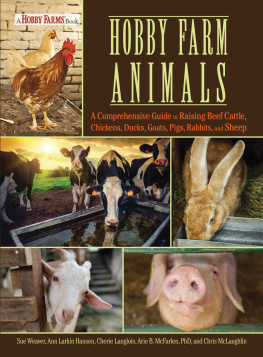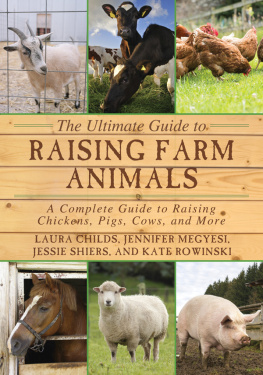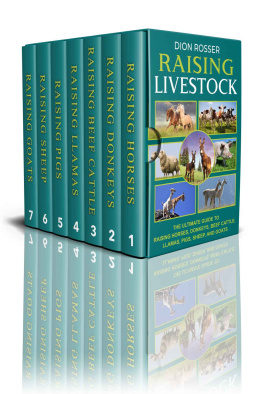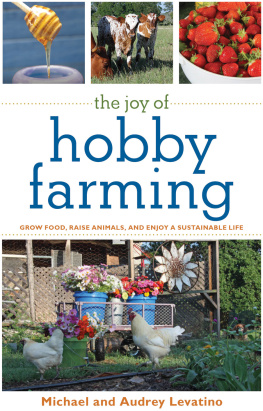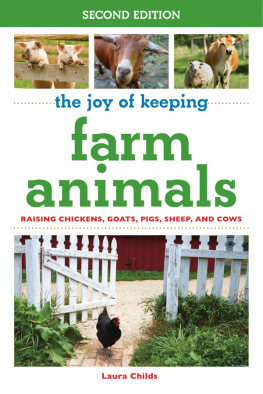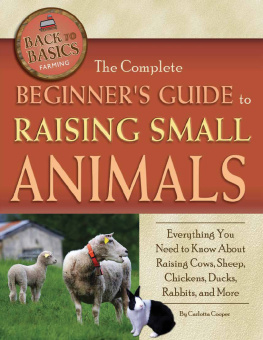Selecting and Bringing Home Beef Cattle
Attention to the basics of raising beef cattle will reap rewards in the form of a freezer full of homegrown beef as well as extra cash from meat and calf sales. Where cattle are common, so are the auction barns, truckers, and processing plants that make it fairly simple to buy, sell, and process cattle. Americans love beef, so there is a ready market for beef cattle.
Theres another benefit to owning beef cattle: they can improve your land. This may come as a surprise, given the reputation cattle have acquired in certain quarters for overgrazing and destroying sensitive lands. But beef cattle are a tool, not a cause. The result depends on how the tool is wieldedjust as a hammer can be used to fix a building or destroy it. Research and on-the-ground experience have demonstrated that, when properly managed, beef cattle can be a highly effective tool for restoring health to damaged grasslands and watersheds. On a hobby farm, well-managed cattle can continually increase the richness of your soils, the biodiversity and lushness of your pastures, and the water quality of your ponds and streams.
Beef cattle will also enhance the view from your kitchen window. Every time I look out the window to see our cattle grazing the green slopes of our farm, hear bobolinks singing in our pasture, or prepare homegrown steaks for dinner, Im glad we have beef!
For hundreds of years, people have bred cattle to develop characteristics that were best adapted to a particular climate and purpose. Eventually, this resulted in distinctive breeds of cattle, each with a distinctive palette of physical traits. Today, a cattle buyer can choose from a wonderful array of color, build, size, growth rate, and potential meat and milk production to fit cattle to the farm, the climate, and the purposes of the owner.
Although not all cattle are created physically equal, they do share general behavior characteristics. Cattle sense the world differently than we do. They eat different foods and digest them differently. Understanding how cattle operate is key to knowing what to expect from them, what they will like and wont like, and how to get them to do what you want them to do. Understanding and working with cattles natural behaviors will result in calmer, healthier animals.
Beef Breeds
Until the middle of the eighteenth century, cattle were tough, multipurpose animals that were not selectively bred for any specialized purpose. Differences in size, color, and build were simply results of groups being isolated from one another in remote settlements. Then, in 1760, Robert Bakewell, an Englishman, began the first known systematic breeding program to improve the uniformity and appearance of his cattle. The results were published in 1822 in George Coatess Herd Book of the Shorthorn Breed , the first formal recognition of a cattle breed. Other breed herd books soon followed, and, as the concept of breeding for a specific purpose spread, cattle were divided into two main categories: those bred primarily for milk production and those bred primarily for beef production. Even the original dual-purpose Shorthorn breed has been split into Shorthorns for beef and Shorthorns for milking.
More than five hundred breeds of cattle exist in the world today, although only a few are common in the United States. Milking Shorthorn; the ubiquitous black-and-white Holstein; and the rarer Guernsey, Brown Swiss, Ayrshire, and Jersey make up the six primary dairy breeds in the United States. All dairy breeds produce excess bull calves that are raised for beef, and plenty of beef operations are built on dairy calves.
Hereford cattle, with their familiar white faces, red bodies, and white markings, have been the backbone of the American beef industry since a few decades after their arrival in 1847. The Black Angus, first brought to the United States in 1873, is now almost as numerous as the Hereford, while the breeds offshoot, Red Angus, established its own breed registry in the mid-1900s. These three breeds, along with the Shorthorn, Scottish Highland, Dexter, Devon, and Galloway breeds, are the major British breeds of beef cattle, so designated because they all originated in England, Scotland, Ireland, or Wales. In general, the British beef breeds are smaller, fatten faster, and are more tolerant of harsh conditions than the continental breeds.
The continental breeds from Europe are generally larger and slower to mature but offer a bigger package of beef to the producer. The most common are the Charolais, the Limousin, and the Saler from France; the Simmental from Switzerland; and the Gelbviehs from Austria and West Germany.
Historically, the term cattle was used to refer to all varieties of four-legged livestock, including horses, goats, and sheep. When referring specifically to bovines, ranchers used the term neat cattle. Only in the past 100150 years has the meaning of the word cattle changed to refer only to domesticated bovines of the Bos genus.
In the United States, new breeds have been developed that tolerate southern heat better than do the European imports. The famous Texas Longhorn, which developed mostly on its own from Spanish cattle brought over by colonists, provided the starting foundation for American ranching. The American Brahman was developed from Indicus-type imports and then was crossed with different European breeds to create the Santa Gertrudis, the Brangus, the Beefmaster, and several other uniquely American cattle breeds.
When well cared for, any breed of cattle will produce good beef. Look for a breed suited to your climate and pasture type and, if the income is important, to the prospective buyers of your beef. Auction-barn buyers and finishers will have definite preferences. Most important, get something you like. You may fall in love with the Oreo-cookie markings of the Belted Galloway, the shaggy look and big horns of the Scottish Highland, or the gentle disposition of the Hereford.
Endangered Breeds
Of the hundreds of cattle breeds adapted to an enormous range of climates and conditions throughout the world, many are now endangered. The Livestock Conservancy lists fifteen breeds in the United States that need help to survive. On the Critical list, defined as breeds that have fewer than 200 US registrations each year, are the Canadienne, Dutch Belted, Florida Cracker, Kerry, Lincoln Red, Milking Devon, Milking Shorthorn (native), Randall, and Texas Longhorn. On the Threatened list, with fewer than 1,000 registrations each year, are the Ancient Red Park, Pineywoods, and Red Poll. The Watch list, with fewer than 2,500 registrations, includes the once-popular Ayrshire and Guernsey, along with the Galloway.
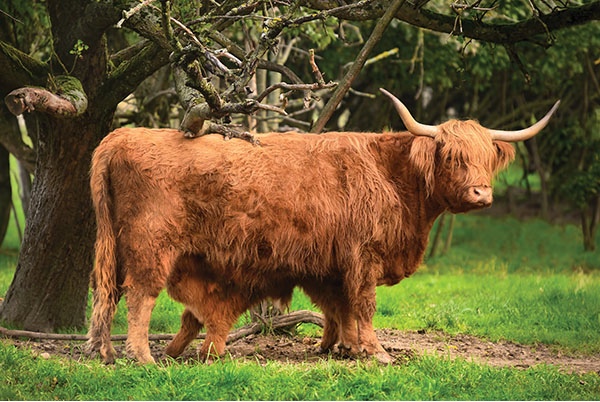
Highland cattle have a distinctive look that appeals to many.
Hooves and Hide
Good feet and legs are important in all cattle. Cows have cloven (two-part) hooves that average around 3 4 inches. If a cow weighs 1,000 pounds, thats a lot of weight coming down on those little hooves every time she takes a step, and she takes a lot of steps in a day to get food and water. Cattle dont like mud or slippery surfaces because they can fall and hurt themselves; they will walk around bad footing if they can. Cattle hooves grow continuously, and long hooves cause lame cattle. If the herd is getting enough exercise, however, their hooves should not get too long. A few rocks in the pasture will help keep hooves worn down.
Cows also use their hooves to scratch themselves and to kick. They can kick both sideways and backward, and theyre quick as lightning. If they have horns, theyll also use these to defend themselves, and a horn can do even more damage than a hoof. For this reason, many cattle owners prefer polled, or naturally hornless, cattle. You can also dehorn calves when they are quite young so that their horns never grow.

